Abstract
The aim of this study was to assess the usefulness of pelvic floor exercises in the treatment of urinary incontinence in women and to analyse the factors which determine a successful outcome. The study involved 66 women who had reported 'genuine stress incontinence' to their general practitioner. They were assigned at random to the treatment or control group. The treatment group received instructions in pelvic floor exercises from a general practitioner. The control group received no therapy. At the start of the trial the severity of the patients' incontinence was assessed objectively. This assessment was repeated after three months and patients were also asked for their own perception of whether their incontinence had improved. After the three months' evaluation the patients in the control group were also given instructions in pelvic floor exercises. After another three months they were assessed in the same way. About 60% of the patients in the treatment group were dry or mildly incontinent after three months compared with only one patient in the control group; the mean weekly frequency of incontinence episodes fell from 17 to five in the treatment group but remained virtually unchanged in the control group; and about 85% of the women in the treatment group felt that their incontinence had improved or was cured compared with no one in the control group. These results were later corroborated by those for the control group. The most important factor in the success of the treatment was the patients' motivation, as demonstrated by their adherence to the daily exercises.(ABSTRACT TRUNCATED AT 250 WORDS)
Full text
PDF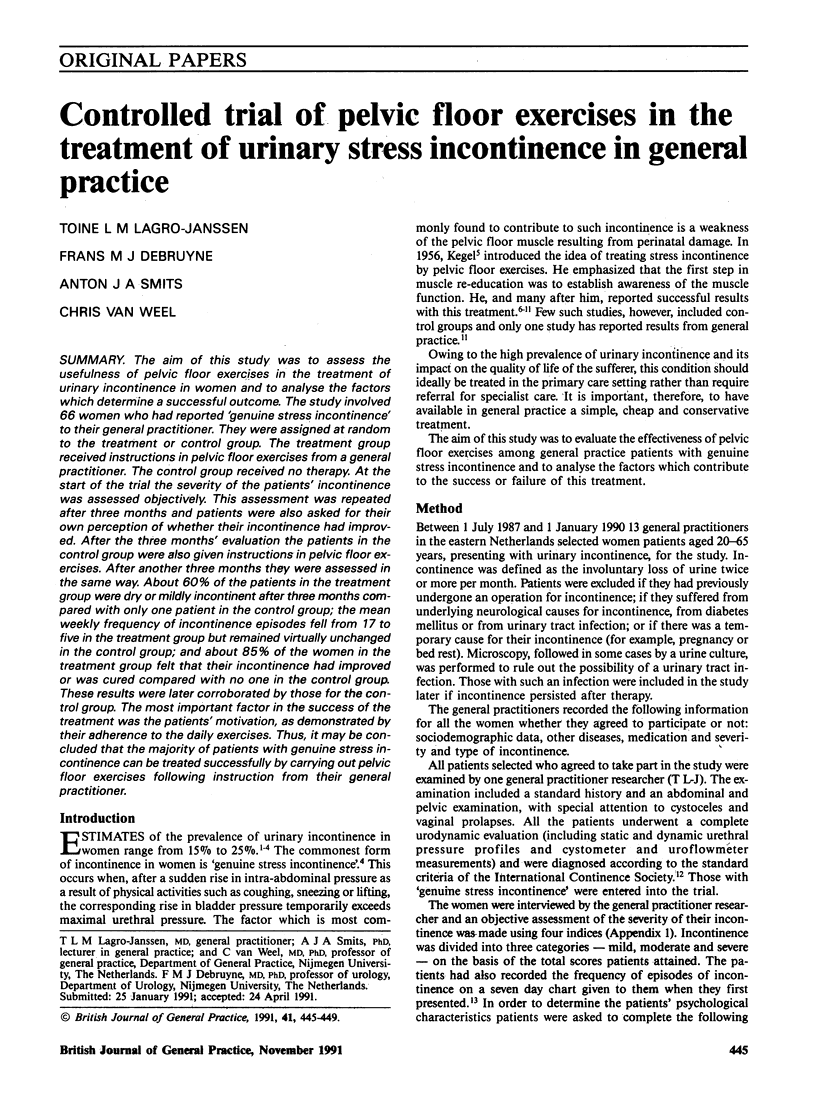
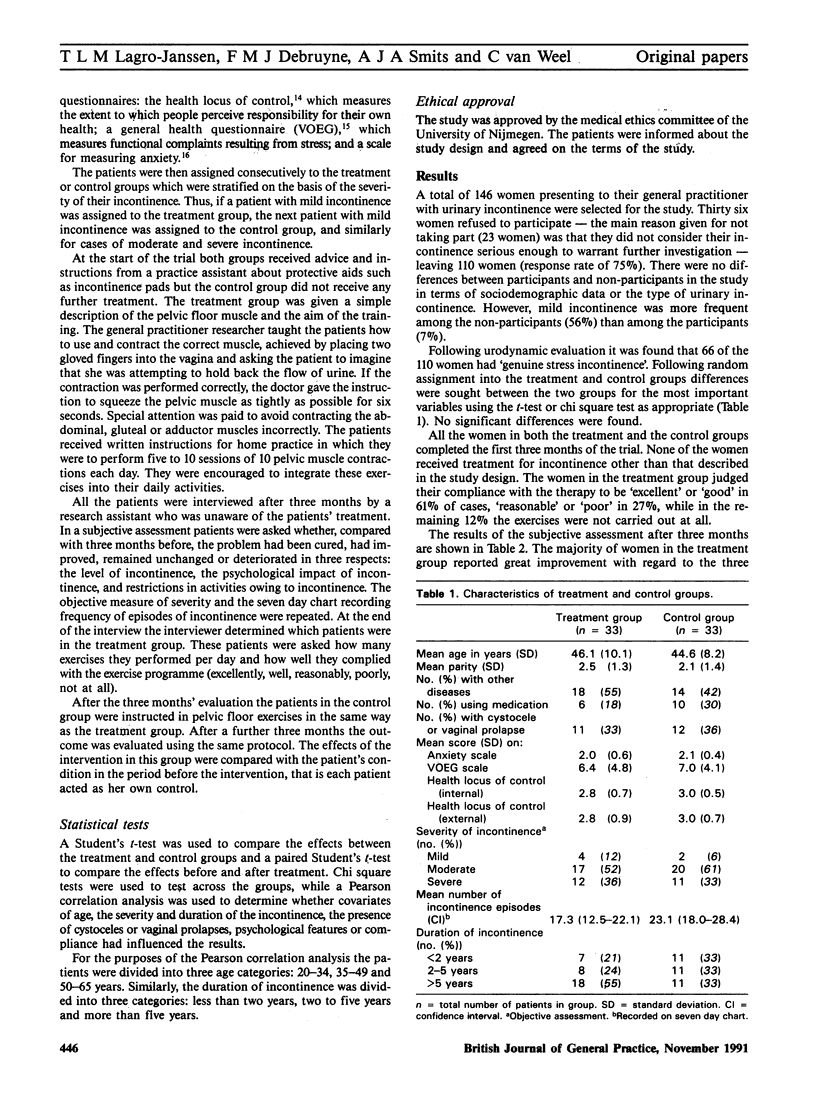
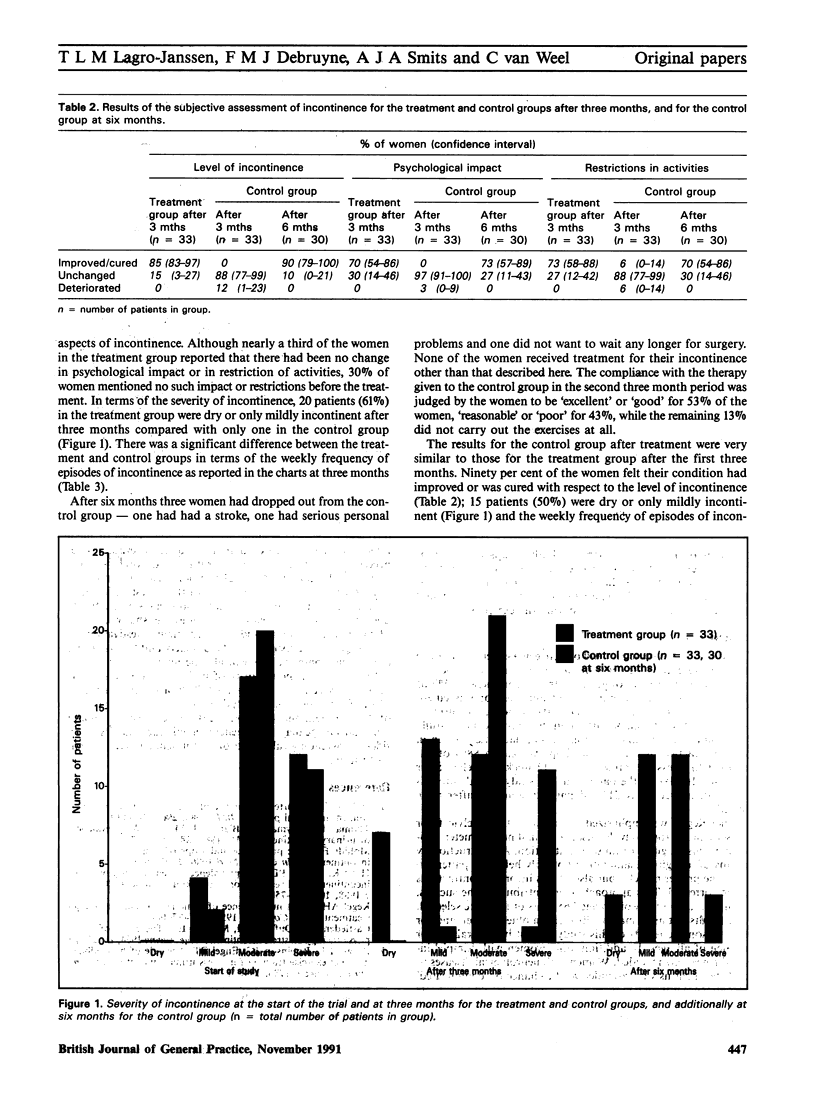
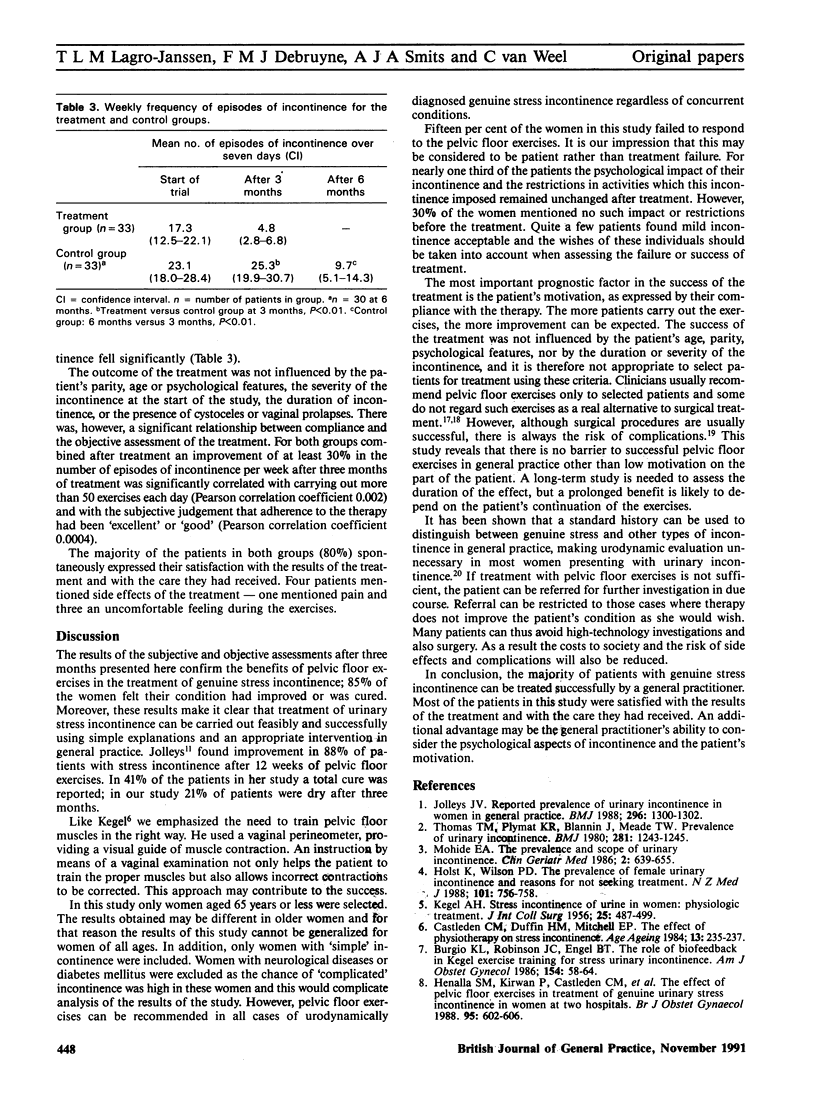
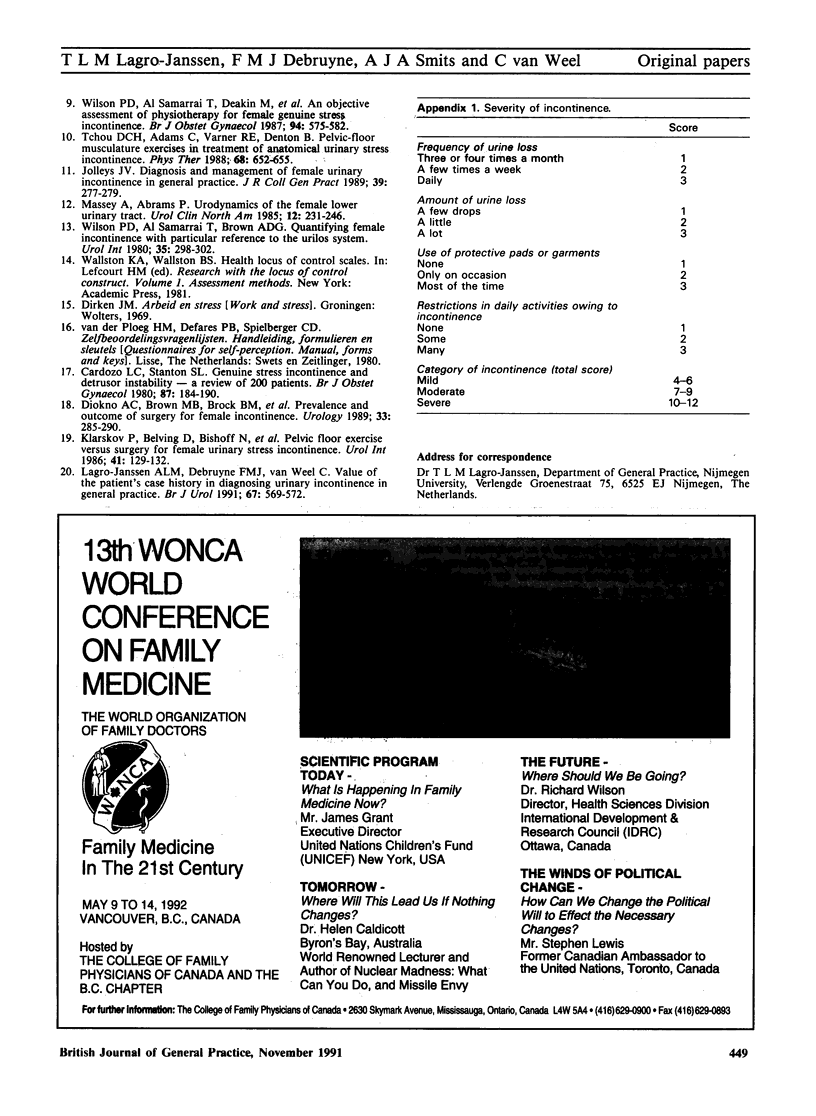
Selected References
These references are in PubMed. This may not be the complete list of references from this article.
- Burgio K. L., Robinson J. C., Engel B. T. The role of biofeedback in Kegel exercise training for stress urinary incontinence. Am J Obstet Gynecol. 1986 Jan;154(1):58–64. doi: 10.1016/0002-9378(86)90393-5. [DOI] [PubMed] [Google Scholar]
- Cardozo L. D., Stanton S. L. Genuine stress incontinence and detrusor instability--a review of 200 patients. Br J Obstet Gynaecol. 1980 Mar;87(3):184–190. doi: 10.1111/j.1471-0528.1980.tb04515.x. [DOI] [PubMed] [Google Scholar]
- Castleden C. M., Duffin H. M., Mitchell E. P. The effect of physiotherapy on stress incontinence. Age Ageing. 1984 Jul;13(4):235–237. doi: 10.1093/ageing/13.4.235. [DOI] [PubMed] [Google Scholar]
- Diokno A. C., Brown M. B., Brock B. M., Herzog A. R., Normolle D. P. Prevalence and outcome of surgery for female incontinence. Urology. 1989 Apr;33(4):285–290. doi: 10.1016/0090-4295(89)90266-5. [DOI] [PubMed] [Google Scholar]
- Henalla S. M., Kirwan P., Castleden C. M., Hutchins C. J., Breeson A. J. The effect of pelvic floor exercises in the treatment of genuine urinary stress incontinence in women at two hospitals. Br J Obstet Gynaecol. 1988 Jun;95(6):602–606. doi: 10.1111/j.1471-0528.1988.tb09491.x. [DOI] [PubMed] [Google Scholar]
- Holst K., Wilson P. D. The prevalence of female urinary incontinence and reasons for not seeking treatment. N Z Med J. 1988 Nov 9;101(857):756–758. [PubMed] [Google Scholar]
- Jolleys J. V. Diagnosis and management of female urinary incontinence in general practice. J R Coll Gen Pract. 1989 Jul;39(324):277–279. [PMC free article] [PubMed] [Google Scholar]
- Jolleys J. V. Reported prevalence of urinary incontinence in women in a general practice. Br Med J (Clin Res Ed) 1988 May 7;296(6632):1300–1302. doi: 10.1136/bmj.296.6632.1300. [DOI] [PMC free article] [PubMed] [Google Scholar]
- KEGEL A. H. Stress incontinence of urine in women; physiologic treatment. J Int Coll Surg. 1956 Apr;25(4 Pt 1):487–499. [PubMed] [Google Scholar]
- Klarskov P., Belving D., Bischoff N., Dorph S., Gerstenberg T., Okholm B., Pedersen P. H., Tikjøb G., Wormslev M., Hald T. Pelvic floor exercise versus surgery for female urinary stress incontinence. Urol Int. 1986;41(2):129–132. doi: 10.1159/000281181. [DOI] [PubMed] [Google Scholar]
- Lagro-Janssen A. L., Debruyne F. M., van Weel C. Value of the patient's case history in diagnosing urinary incontinence in general practice. Br J Urol. 1991 Jun;67(6):569–572. doi: 10.1111/j.1464-410x.1991.tb15217.x. [DOI] [PubMed] [Google Scholar]
- Massey A., Abrams P. Urodynamics of the female lower urinary tract. Urol Clin North Am. 1985 May;12(2):231–246. [PubMed] [Google Scholar]
- Mohide E. A. The prevalence and scope of urinary incontinence. Clin Geriatr Med. 1986 Nov;2(4):639–655. [PubMed] [Google Scholar]
- Tchou D. C., Adams C., Varner R. E., Denton B. Pelvic-floor musculature exercises in treatment of anatomical urinary stress incontinence. Phys Ther. 1988 May;68(5):652–655. doi: 10.1093/ptj/68.5.652. [DOI] [PubMed] [Google Scholar]
- Thomas T. M., Plymat K. R., Blannin J., Meade T. W. Prevalence of urinary incontinence. Br Med J. 1980 Nov 8;281(6250):1243–1245. doi: 10.1136/bmj.281.6250.1243. [DOI] [PMC free article] [PubMed] [Google Scholar]
- Wilson P. D., Al Samarrai M. T., Brown A. D. Quantifying female incontinence with particular reference to the Urilos System. Urol Int. 1980;35(4):298–302. doi: 10.1159/000280336. [DOI] [PubMed] [Google Scholar]
- Wilson P. D., Al Samarrai T., Deakin M., Kolbe E., Brown A. D. An objective assessment of physiotherapy for female genuine stress incontinence. Br J Obstet Gynaecol. 1987 Jun;94(6):575–582. doi: 10.1111/j.1471-0528.1987.tb03153.x. [DOI] [PubMed] [Google Scholar]


